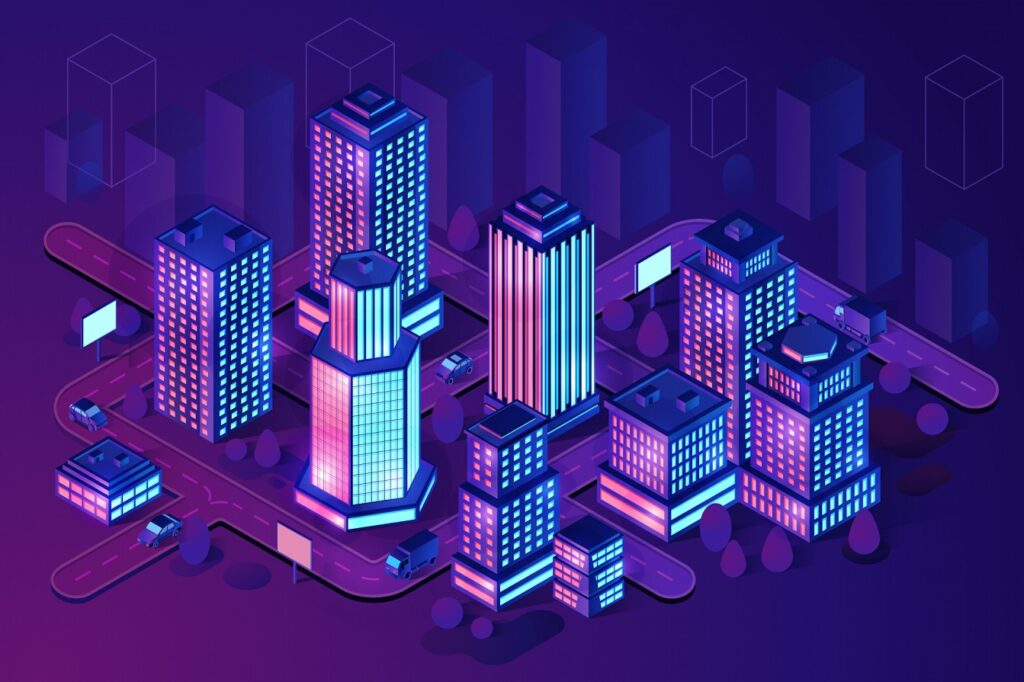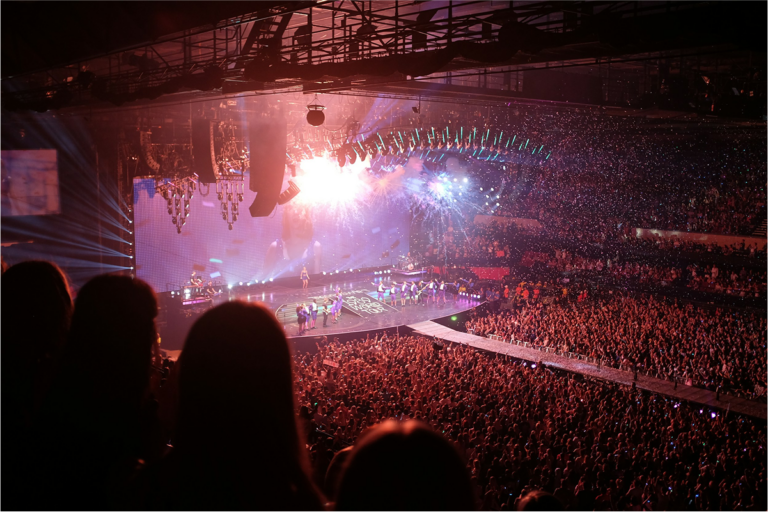
Over recent months, the world’s great metropolises have had their souls well and truly stripped away.
The coronavirus pandemic has driven us from our cities, with strict stay-at-home instructions leaving our streets and offices deserted and forcing retail and hospitality businesses to put up the shutters. Previously our centres of economic and cultural prosperity, they have more recently resembled ghost-towns akin to those seen in dystopian movies.
At the time of publication, life is finally beginning to return to some form of normality. In the United Kingdom, cinemas, theatres, restaurants and pubs, for so long laid dormant, are now ready to re-open. Soon footfall will increase, the buzz will return – our cities will be back.
But the route to a “normal” state of affairs is by no means straightforward. Our urban environments are a complex web of infrastructure, transport networks and rapidly-growing populations. We will have to take incremental steps to reintegrate with our cities, while also embracing new and permanent ways of navigating people-dense areas. Unsurprisingly, technology will make a critical contribution.
“What the pandemic has done, in my opinion, is bring into sharp focus the need to go about the design of our urban environments in a smart way,” says Jonathan Bailey, who is involved in the Construction, Cities & Territories division of Dassault Systèmes through his role as Director of Business Transformation.
The technology-enabled urban area is by no means a radical idea; you will be very familiar with the concept of “smart cities”. One thing the pandemic has done, however, is highlight those city authorities who were proactive in their implementation of technology – and exposed those who were slow to adopt.

“The pandemic has definitely forced the issue. More globally, there are organisations, cities and municipalities that have undertaken this step and they will be in much better shape,” adds Bailey, who then outlines how technology should be utilised with a post-pandemic citizen in mind.
“We’re transitioning into an age where we need to streamline the movements of people more and more. We must consider the way that citizens move around cities, and the way that we’re now having to control our normal practices where we move more freely in open spaces, especially in passenger and commuter environments.
“There are capabilities out there that give you the ability to flow the human traffic in a more controlled way. By using modelling and simulation for example, you can ask things like ‘what happens if I need to maintain a one-metre distance rather than two-metre?’ Once you’ve done those kinds of assessments, you can then also use that same technology to design a walkway which is going to be flowing in one direction if you’re entering and one direction if you’re leaving.”
Modelling and simulation are core capabilities for Dassault Systèmes, a long-established software company which specialises in providing virtual environments that help clients – whether they’re involved in smart city projects or anything else – plot sustainable innovations.
The organisation, which has more than 250,000 enterprise customers in 140 countries globally, has been the vanguard for developments in 3D design technology. It claims to have created the first “digital twin” alongside Boeing in 1989. Today, through a single platform, it offers a multitude of services to industries such as energy, mobility and life sciences.
Dassault Systèmes’ smart city efforts are funnelled through its 3DEXPERIENCity project, which harnesses the 3DEXPERIENCE platform’s modelling and simulation tools to enable urban planners to study and test ideas around digital.
“With modelling, we can effectively create and visualise products,” explains Bailey, who has worked across the software industry for more than 20 years. “We can model in a scientific way. We can basically represent whatever that particular product is in absolute finite detail, whether that be an entire city or a single car.
“In simulation, we take the product that we’ve modelled and put it into its real-world context. And that’s key when we talk about smart cities. It’s one thing to be able to 3D model a static item, but actually what we’re interested in doing is taking that model and putting it into its environment, so we understand what will happen.”
What the pandemic has done, in my opinion, is bring into sharp focus the need to go about the design of our urban environments in a smart way
With the World Health Organization projecting that 70% of the population will reside in urban areas by 2050, Dassault Systèmes is doubling down on its work in the smart city space. Aligning its expertise in areas like construction, transport and waste management, Dassault Systèmes is able to work with major metropolitan centres on building sustainability and intelligence into their urban environments of the future.
Recently, it collaborated on Wuhan’s Leishenshan Hospital, famously constructed over a two-week period to deal with an onrush of COVID-19 cases. Dassault Systèmes simulated part of the build around air movement and how the hospital could control and reduce contamination.
Bailey goes on to quote two other larger-scale examples – and relates each case back to the pandemic and how laying a smart city foundation has enabled these cities to be one step ahead.
“Since 2015 Dassault Systèmes has been working with Singapore to create ‘Virtual Singapore’ and now they have a massive head start,” he states. “They already have a digital 3D map, with all of the different public agencies’ data in there – they’ve got geometrics, they’ve got geospatial, they’ve got topology, they’ve got legacy data that shows them things like climates, they’ve got the demographics of the population. A Singapore smart city is in a fantastic position to make better decisions, especially during and after a pandemic.
“The same applies to Rennes [in north-west France]. They’re very quickly able to start making plans, particularly when it comes to an emergency plan.
“Sometimes we think about smart cities being something we do because we want to design a citizen-centric environment and it’s going to be a really great experience to live there, but the pandemic has put another lens on it. What happens when something that we don’t want to happen does happen, and therefore we need to make quick and accurate decisions? The answer is that you need to have a smart city approach where you bring this data together. It’s absolutely critical.”
In fact, Bailey believes the challenges that come with smart city initiatives are much the same now as they were before the pandemic struck.

He says city authorities have always struggled to get a handle on data, which is why Dassault Systèmes has made information intelligence and analytics a central pillar of the support services it delivers to clients.
“We’re a scientific company and we base everything in maths. All of the data that we capture and harness in the modelling and simulation, we need to do something with it. You need to understand it, leverage it,” he adds. “In some ways, I think that the challenge that exists now for smart cities is the same as the one that existed before, which is bringing together all of the organisations that are required to design a citizen-centric urban environment. They don’t do that particularly well.
“You need to have this cohesion of data, you need to be able to bring together all of the parties, to be able to make those decisions quickly and correctly.”
In February, the International Data Corporation’s Worldwide Semiannual Smart Cities Spending Guide projected global expenditures on smart cities in 2020 would rise by 18.9% compared to 2019. While the ultimate effect of the pandemic is impossible to predict, it is expected that this figure will still be realised.
Yet while the growth of smart cities looks set to continue at a rate, there are now more concerns than ever around security and privacy. More connected devices means more avenues for cyber attackers, while the explosion of data carries obvious vulnerabilities for citizens and businesses who engage in urban digitalisation.
ABI Research indicates there will be approximately 1.3 billion wide-area network smart city connections by 2024 – with half of those connections unable to handle the increased number of threats present in a smart city environment.
It is a barrier that Bailey admits is a concern but he only sees a relentless increase in technology initiatives after being asked what the future of our cities holds in store.
“Without doubt we are going to see fewer vehicles moving around in the city; we’re going to see more cycling, we’re going to see more walking. I think we will see a greener approach in the buildings we design too – they’ll need to become more self-sufficient,” he concludes.
“We’re also moving vehicles to electrification. More and more, we’ll see requirements there that are going to drive changes in our urban environments. I think we can see more planning happening around making that a possibility.”



